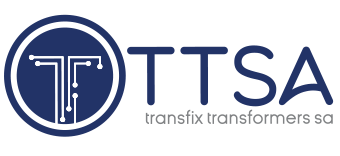State-owned entities, like South Africa’s Eskom, should consider using high-capacity vehicles to reduce overall capital costs, says Council for Scientific and Industrial Research (CSIR) principal research engineer Christopher de Saxe. A high-capacity vehicle is essentially a vehicle that carries more load than what is conventional for the country in which it operates in, and in South Africa, regulations permit vehicles up to 56 t, and 22 m in length – any vehicle that exceeds this would be considered a high-capacity vehicle.
Posts
At a time when funding for fossil fuel projects is drying up, Botswana is racing to develop six new coal mines and a rail link for exports, with the government prepared to put its own money into the projects. The southern African nation, the world’s second-biggest diamond producer, has more than 200-billion tons of untapped coal reserves. To kickstart the industry, it has turned to investors from the largest global coal consumer, China.
Nonfprofit think tank Res4Africa Foundation has appointed technology company Schneider Electric’s Middle East and Africa president Caspar Herzberg to its executive committee.
Res4Africa has, since 2012, been promoting a green energy transition in Africa and appointed Herzberg for four years to contribute to stakeholder engagement in government and the private sector.
Côte d’Ivoire chemical engineer Noël N’guessan has won the Royal Academy of Engineering’s 2021 Africa Prize for Engineering Innovation. He developed biowaste equipment for smallholder farmers in West Africa to efficiently manage and generate income from biowaste.
Now that the licence exemption threshold for self-generation has been extended to 100 MW, it encourages the development of a robust embedded energy sector, says law firm Cliffe Dekker Hofmeyr (CDH). CDH says the risks to South Africa’s energy security, in addition to the economic impacts of Covid-19, have intensified the business sector’s long-standing call for increased private power generation capacity.
As Ethiopia begins diverting 13.5-billion cubic meters of water from the Blue Nile river to its controversial new megadam, residents of Sudan to the south fear a repetition of last year’s devastating drought. The second stage of filling the $4.5-billion reservoir is ratcheting up tensions between Ethiopia and neighbours Sudan and Egypt, who depend on the Nile to support farming and generate power for their economies.
Creamer Media’s Chanel de Bruyn speaks to Engineering News Editor Terence Creamer about Mineral Resources and Energy Minister Gwede Mantashe’s latest update on amendments to be made to Schedule 2 of the Electricity Regulation Act to lift the licensing-exemption threshold for embedded generation projects to 100 MW and what this means for the energy sector.
In 2020 Atlas Copco Power Technique announced the launch of its PAC H centrifugal pump range, which consists of four models, for high-pressure applications. The pumps have been designed to reduce downtime, prolong the life span of the equipment used in an application and save operational costs. The PAC H centrifugal pump can handle liquids containing solids of up to 89 mm in size, making the pump particularly well suited to industrial applications, such as water transfer in the oil and gas sector, applications in construction and at municipalities, as well as sewerage bypass systems, explains Atlas Copco Power Technique portable products business line manager David Stanford.
Materials testing and inspection service provider Dekra Industrial has joined forces with aerial solutions and drone services company Sky Africa Drones to offer a drone inspection service that combines the technologies of high scope non-destructive testing (NDT) systems with the manoeuvrability of a drone. Sky Africa Drones is a fully licensed drone company specialising in security surveillance and provides quality aerial data fast and accurately.
The Kyalami Grand Prix Circuit and International Convention Centre has received its energy performance certificate with a rating of B, says South African National Energy Development Institute (SANEDI) energy efficiency and corporate communications GM Barry Bredenkamp. “The facility is comprehensive, with the main building about 14 500 m2 in size. The energy requirements are significant, and the rating is to be applauded.”
INDUSTRY NEWS
- NERSA appoints Electricity Market Advisory Forum to guide power-market reformDecember 19, 2025 - 2:04 pm
- Eskom offers more details on envisaged roles of the NTCSA and the TSODecember 18, 2025 - 11:04 am
- NTCSA says any electricity deal to salvage Mozal must ensure its financial sustainabilityDecember 17, 2025 - 3:01 pm
WHERE TO FIND US
Address
9 Yellow Street
Botshabelo Industrial Area
Botshabelo, Free State
Call / Email Us
Tel: +27 (0) 61 956 6772
Email: info@transfix.co.za
